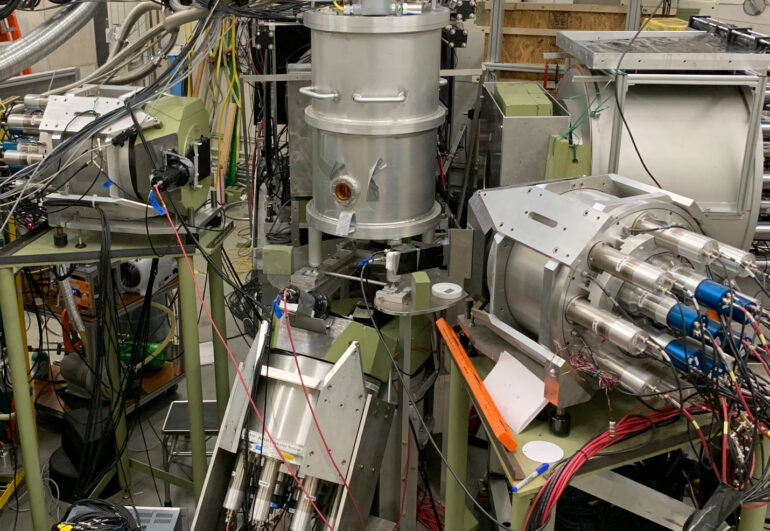The proton is a composite particle made up of fundamental building blocks of quarks and gluons. These components and their interactions determine the proton’s structure, including its electrical charges and currents. This structure deforms when exposed to external electric and magnetic (EM) fields, a phenomenon known as polarizability. The EM polarizabilities are a measure of the stiffness against the deformation induced by EM fields. By measuring the EM polarizabilities, scientists learn about the internal structure of the proton.
This knowledge helps to validate scientific understanding of how nucleons (protons and neutrons) form by comparing the results to theoretical descriptions of gamma-ray scattering from nucleons. Scientists call this scattering process nucleon Compton scattering.
When scientists examine the proton at a distance and scale where EM responses dominate, they can determine values of EM polarizabilities with high precision. To do so, they use the theoretical frame of Effective Field Theories (EFTs). The EFTs hold the promise of matching the description of the nucleon structure at low energies to the current theory of the strong nuclear force, called quantum chromodynamics (QCD). In this research, scientists validated EFTs using proton Compton scattering. This approach also validated the framework and methodology that underlie EFTs.
Proton Compton scattering is the process by which scientists scatter circularly or linearly polarized gamma rays from a hydrogen target (in this case, a liquid target), then measure the angular distribution of the scattered gamma rays. High-energy gamma rays carry strong enough EM fields that the response of the charges and currents in the nucleon becomes significant.
In this study, now published in Physical Review Letters, scientists performed new measurements of Compton scattering from the proton at the High Intensity Gamma Ray Source (HIGS) at the Triangle Universities Nuclear Laboratory. This work provided a novel experimental approach for Compton scattering from the proton at low energies using polarized gamma rays. The study advances the need for new high-precision measurements at HIGS to improve the accuracy of proton and neutron polarizabilities determinations. These measurements validate the theories that link the low-energy description of nucleons to QCD.
More information:
X. Li et al, Proton Compton Scattering from Linearly Polarized Gamma Rays, Physical Review Letters (2022). DOI: 10.1103/PhysRevLett.128.132502
Provided by
US Department of Energy
Citation:
How stiff is the proton? (2022, October 3)
